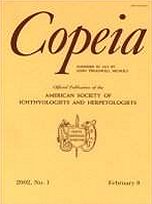Comparisons of cardinalfish (Apogonidae) assemblage structure were made using small rotenone samples within specific habitats from Belize, Honduras, and Puerto Rico in the Atlantic Ocean, and the Hawaiian Islands in the Pacific Ocean. A total of 146 collections containing two or more apogonid species was made in the Gulf of Honduras, 22 in Puerto Rico, and 35 in the Hawaiian Islands. Detrended correspondence analysis determined whether collections from specific habitats clustered together in ordination space. Analysis of the Atlantic apogonid data did not result in the recognition of any exclusive assemblages corresponding to specific habitats, whereas collections from the Pacific Ocean demonstrated exclusive clusters of cardinalfish assemblages from different habitats. Horn's Index of Similarity was used to compare assemblages, and a randomization test was used to evaluate their significance. Because these differences could be the result of large differences in sample sizes between collections from the two oceans, subsamples of the much larger Atlantic dataset were taken. The subsamples demonstrated that with smaller samples the probability of visualizing polygons containing only samples from a single habitat are greater, but these samples did not result in the same level of habitat specificity as found for the Pacific samples, and similarity measures also differed. These data demonstrate for the first time that assemblage patterns within a single fish family differ between the Pacific and Atlantic Oceans. This difference and earlier findings that different fish families exhibit various levels of associations of assemblages with habitats, support the conclusion that assemblage structure of coral-reef fishes cannot be explained by a single paradigm.
BioOne.org will be down briefly for maintenance on 17 December 2024 between 18:00-22:00 Pacific Time US. We apologize for any inconvenience.
How to translate text using browser tools
1 September 2003
Pacific-Atlantic Differences in Cardinalfish Assemblage Structure
David W. Greenfield
ACCESS THE FULL ARTICLE

Copeia
Vol. 2003 • No. 3
September 2003
Vol. 2003 • No. 3
September 2003




